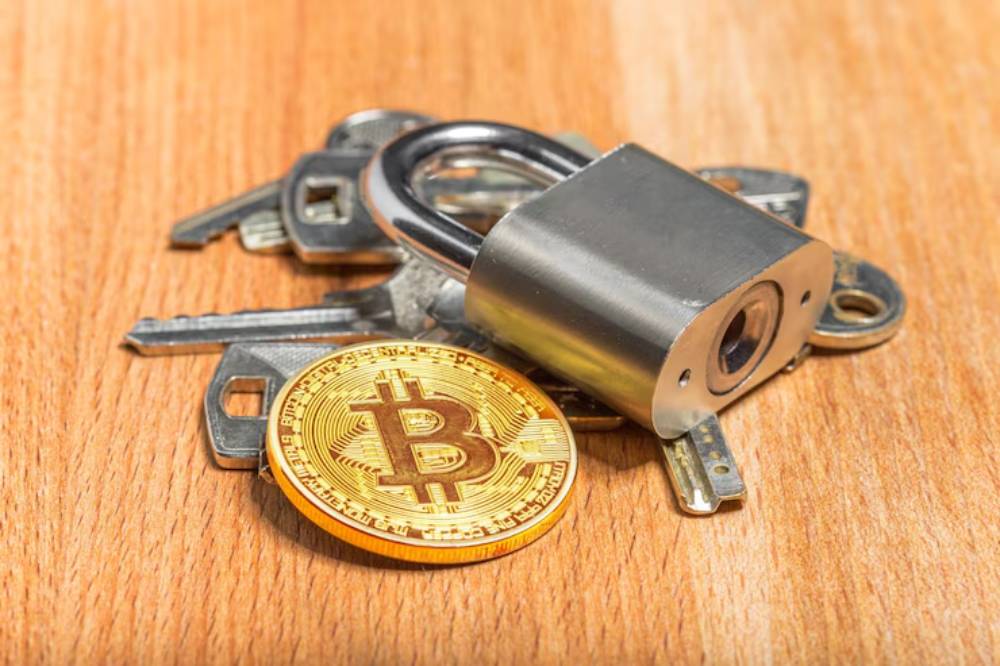
The Risks of Crypto Staking Platforms and How to Stay Safe
With promises of high returns and passive income, crypto staking has become one of the most popular ways to grow digital assets. From centralised exchanges to decentralised finance protocols, staking offers users a chance to earn rewards simply by locking their coins. But behind the promise of yield lies a complex set of risks that are often overlooked.
Whether you’re a DeFi enthusiast or just getting started with Ethereum staking, understanding the landscape is key to protecting your investment. In this post, we’ll explore the most common risks of crypto staking, practical tips for staking safety, and essential strategies for DeFi risk management and secure crypto yield farming.
What Is Crypto Staking?

Crypto staking involves locking up a certain amount of cryptocurrency in a blockchain network to help support operations like transaction validation and governance. In return, you earn staking rewards, usually paid using the same or related token.
Types of staking:
- Proof-of-Stake (PoS) blockchains like Ethereum, Cardano, and Solana
- Delegated staking through validators or staking pools
- DeFi staking and yield farming, where tokens are locked in smart contracts on decentralised platforms
While the mechanics vary, the core idea remains the same: stake your tokens, support the network, and earn a reward.
Why Staking Has Gained Popularity
- Attractive yields (often higher than traditional bank rates)
- Passive income for long-term holders
- Participation in network governance for token holders
- Lower entry barriers compared to mining
But just like any investment promising reward, staking comes with risk—some of it technical, some financial, and some entirely systemic.
Key Risks of Crypto Staking Platforms
To understand staking safety, you first need to recognise the different categories of risk involved in both centralised and decentralised platforms.
1. Smart Contract Vulnerabilities
Many DeFi staking platforms run on smart contracts—self-executing code that governs transactions. If the code contains bugs or is exploited by attackers, your funds could be drained instantly.
Examples of risks:
- Contract bugs
- Logic flaws or failed upgrades
- Oracle manipulation
- Flash loan exploits
Prevention tip: Stick with protocols that have undergone third-party audits and have public bug bounty programs. However, remember—no audit guarantees absolute security.
2. Centralised Platform Failures
Exchanges (e.g., Binance, Coinbase) act as intermediaries and offer some staking services. This introduces custodial risk—your coins aren’t in your wallet anymore.
Risks include:
- Platform insolvency
- Hacks (e.g. Mt. Gox, FTX)
- Mismanagement or fraud
- Regulatory seizure or shutdown
DeFi risk management tip: Not your keys, not your coins. If you’re using a centralised staking provider, understand how they store your assets and what protections they offer.
3. Slashing Penalties
On PoS networks, validators can be penalised for dishonest or negligent behaviour (e.g. going offline, double signing). These penalties, known as slashing, may reduce or eliminate your staked funds.
Delegators—those who stake via a validator—share in these penalties.
Mitigation tip: Carefully research validator uptime, reputation, and community trust. Use tools like Rated Network or validator dashboards to compare.
4. Liquidity Lock-Up
Most staking involves locking your tokens for a fixed period or with an unstaking delay (e.g. Ethereum has a queue-based withdrawal system).
Implications:
- You can’t react quickly to market crashes
- You may miss trading opportunities
- Redeeming may take days or weeks
Solution: Some platforms offer liquid staking (e.g. Lido or Rocket Pool), where you receive a token representing your staked assets. These can be traded, used in DeFi, or held for flexibility—but they come with their own risks.
5. Impermanent Loss in Yield Farming
Yield farming, often confused with staking, involves providing liquidity to DeFi protocols. While rewards can be high, impermanent loss—the loss compared to simply holding your tokens—can eat into profits.
Happens when:
- Token prices diverge significantly
- Pool ratios shift unfavourably
- Fees and rewards don’t offset losses
Secure crypto yield farming tip: Use simulation tools like APY.vision to estimate risk before committing liquidity.
6. Inflation and Tokenomics
High staking rewards often come from inflationary token issuance. Over time, these rewards can dilute the token’s value unless demand grows proportionately.
Watch out for:
- Unlimited supply caps
- Poor utility or ecosystem support
- Rewards that drop dramatically over time
Best practice: Understand the long-term tokenomics and roadmap of the protocol. Sustainable staking requires sustainable economics.
7. Regulatory Uncertainty
As staking becomes more mainstream, regulators are paying closer attention. The U.S. SEC has already taken action against some centralised staking providers, and legislation varies widely across jurisdictions.
Risks include:
- Legal restrictions
- Tax obligations
- Required disclosures or licensing
Stay safe: Research local laws, and if necessary, speak with a crypto-savvy financial adviser or legal expert.
How to Stay Safe While Staking

Here’s how to apply DeFi risk management principles to reduce your exposure while still earning rewards.
1. Diversify Staking Platforms and Assets
Avoid putting all your tokens into one platform or validator. Spread across chains, projects, and mechanisms to reduce systemic risk.
2. Use Reputable Validators or Protocols
Stick with validators that are well-reviewed and active in the community. For DeFi platforms, look for:
- Code audits
- Transparent teams
- Active governance forums
- Open-source development
3. Keep Up With Updates
Smart contracts and staking rules evolve. Stay informed by following:
- Discord and Telegram channels
- GitHub updates
- Official blog announcements
Knowledge is one of your best security tools.
4. Store Long-Term Assets in Cold Wallets
If you’re staking large sums or long-term holdings, use hardware wallets for maximum security. Some staking platforms integrate directly with cold wallets like Ledger or Trezor.
5. Have an Exit Plan
Know how to unstake, what the lock-up periods are, and what triggers slashing. Have a plan for market downturns or protocol issues.
The Future of Secure Crypto Yield Farming
With innovation accelerating in DeFi, new models are emerging that aim to reduce risk while maintaining yield:
- Liquid staking derivatives
- Insurance-backed staking
- Protocols with real-world collateral
- Cross-chain staking with dynamic risk controls
As these evolve, the line between staking and traditional finance will continue to blur. But the principles of staking safety remain the same: understand the mechanics, measure the risks, and proceed with clarity—not just enthusiasm.
Final Thoughts: Stake Smart, Not Just Hard

Crypto staking offers genuine opportunities to earn while supporting decentralised networks—but it’s not a set-and-forget affair. Whether you’re chasing 5% or 50% APY, remember that with higher yields come higher risks.
By staying informed, diversifying your strategies, and approaching every staking opportunity with scepticism and structure, you can build a safer, more rewarding experience in the ever-evolving world of Web3.